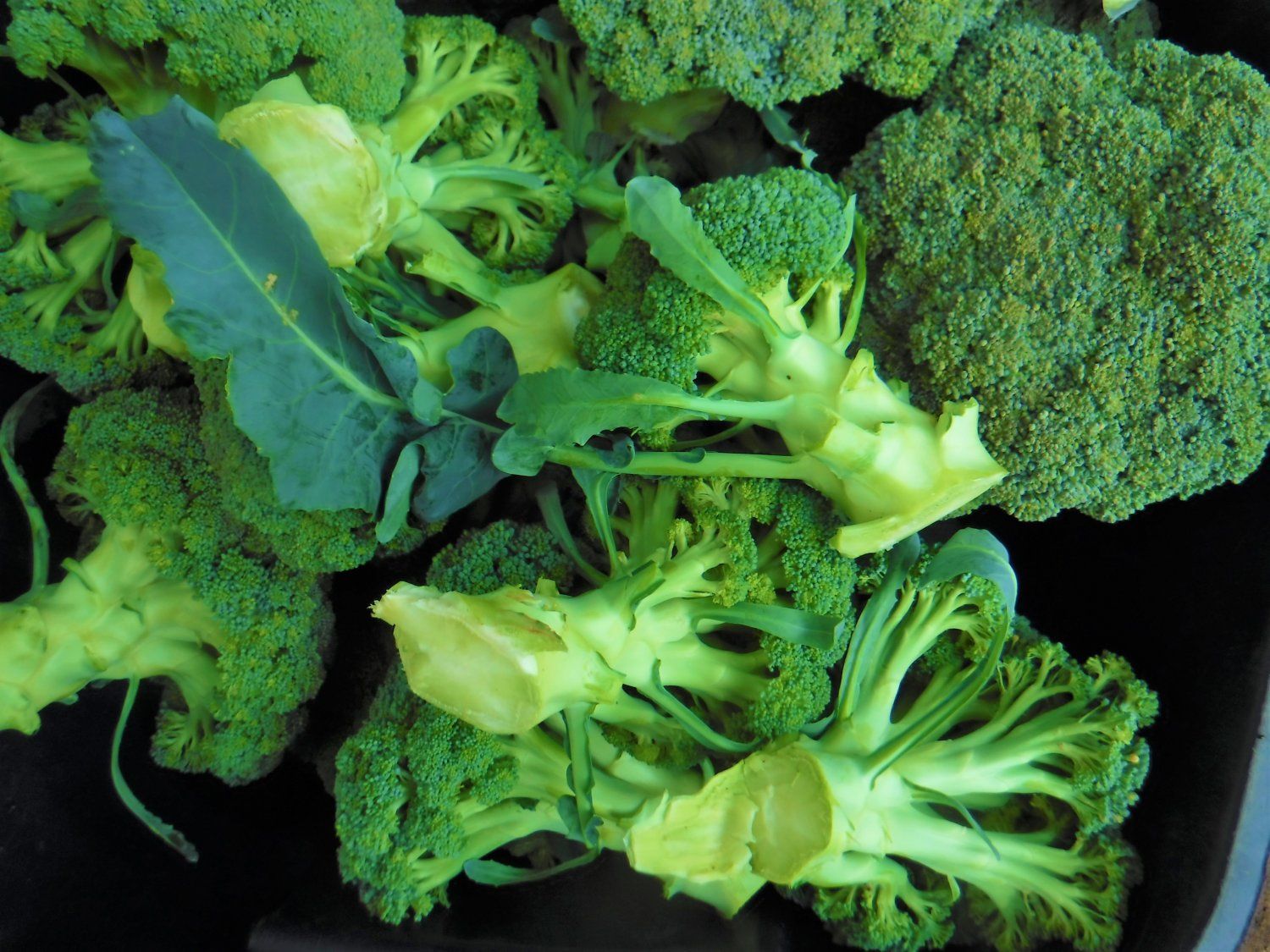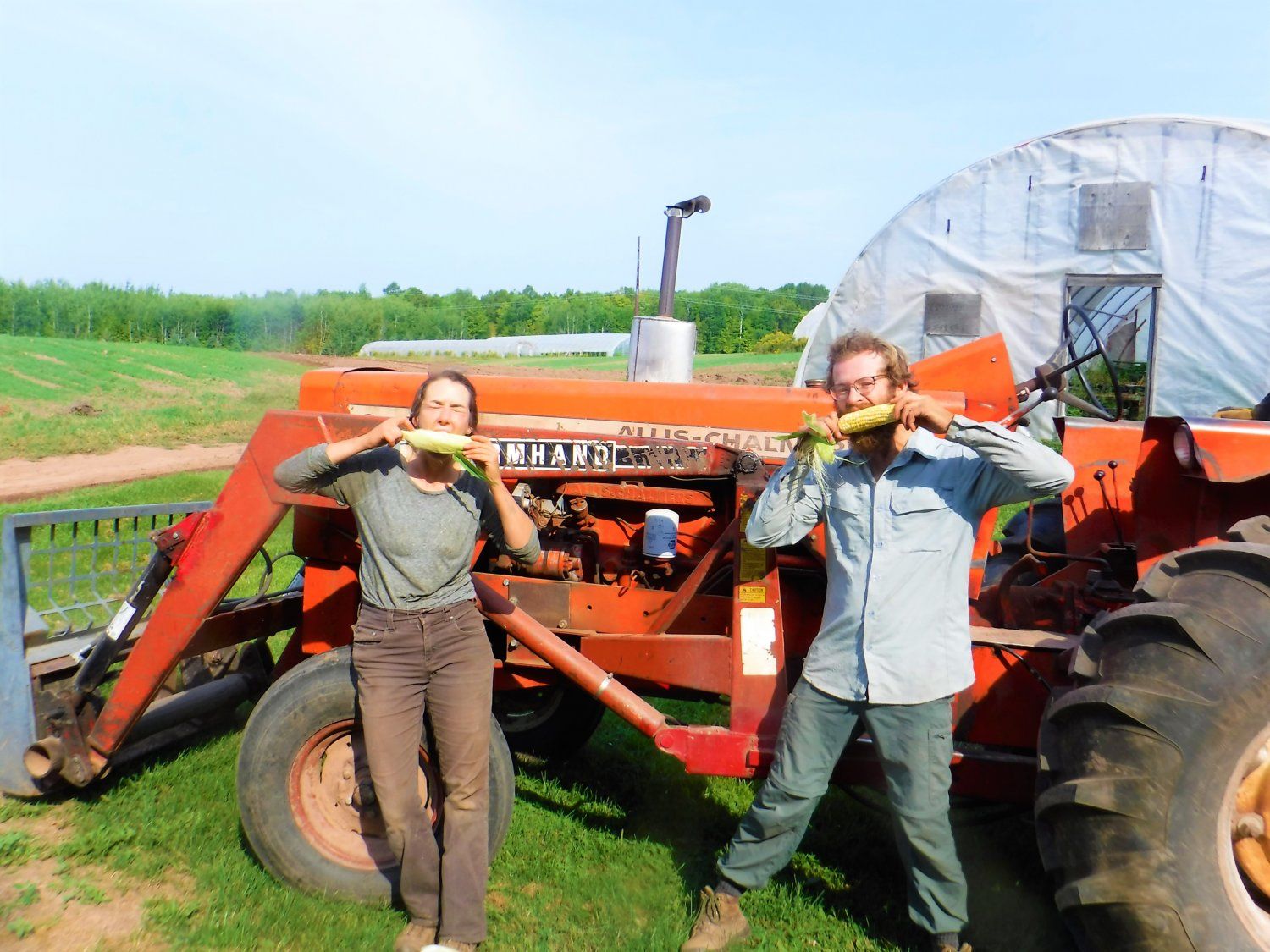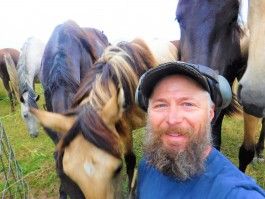Happy Friday the 13th weekend - and welcome to week 12 of the summer CSA season!
Last week on Friday after I had written the newsletter, I worked until dark to finish prepping the fields we were planning to seed into fall cover crops. I would have rather called it a day at 5 on Friday, but those cover crops needed to be seeded before the rain came on Saturday afternoon.
Our neighbors are grazing some of their Morgan horses in our fields, including one field that we plowed up earlier this summer and needed to get prepped before being seeded to fall cover crops. It seems crazy, but those horses LOVED hanging out on that plowed ground. I think it must have felt like a big arena to them. They did us a favor by nibbling down every weed (except milkweed) that tried to grow in that field, and it was pretty neat to see how tidy they kept it! But when it was time for them to move out of there so I could get the field dug, it took a LOT of coaxing to get them to follow me into a grassy pasture. Once I finally got them out and closed the gate, they reluctantly agreed to a photo-op...
On Saturday morning, I got up early to get that cover crop seeded. We don't have a fancy grain drill, so once the field is prepped for planting, we broadcast the seed out across the ground with a big spreader behind the tractor.
When we load the seed into the spreader, we sprinkle in some beneficial bacteria which will colonize the roots of the peas and help draw more nitrogen from the air into the soil. It's a black dusty powder, but otherwise that is the only seed treatment used on our organic farm. LGG's, we call it. Short for "Little Good Guys."
Before I got into farming, I figured that most farms didn't use any seed treatments. I naively believed that chemicals were just applied with a spray rig onto a plant once it began growing, but boy was I mistaken. Most commercial, non organic seed (from grains to veggies) are treated from the start with one or more chemicals. Rodenticides, fungicides, pesticides - you name it. Pretty gross.
Being certified organic not only gives me peace of mind with knowing our food is safe to eat, but that our seeds are not toxic as well. Any spilled seeds can be safely eaten by birds and animals of all sorts. They can be handled without protective gloves or respirators by us farmers, and we don't have to keep pets and kids away from the bags of seeds. Our new pup Hobbes sure thought those bags of seed made a pretty nice little perch in the garage. It seems crazy to have to wish for a time when seed sold to farmers was not toxic, but that's where we're at. Hats off to the organic farmers out there who are keeping chemicals out of our food supply!
Anyway, after I spread the seed, I pulled a 12' drag across the field to lightly bury it. While 12' seems like pretty wide coverage, it took me all morning to get that seed dragged in. If the 10 acres of ground that I seeded on Saturday morning got laid out into a single strip 12' long, it would stretch for nearly 7 miles! No wonder it took me until lunchtime to finish dragging all that seed in.
Looks like we've only got 5-10 more years left in that seat, eh? And that big maul on the right side was used to "persuade" some brackets back into place on the disc. Oh boy. Sometimes it's funny what I see every day but don't notice until I put a picture here in the Happenings. Well, what you see is what you get on a working farm, I suppose.
Anyhow, here's what that cover crop seed looks like now. A carpet of green has sprouted and is growing great! Ecologically speaking, most of the ground we planted went only 3 days without a living, growing cover on it. That's a big win for soil microbes and keeping erosion minimized.
Out in the veggie fields, things are looking pretty good, with the exception of some broccoli. Broccoli is a fussy crop - it can go from too small to harvest to big and inedible in a few short days, depending on the heat. While dry weather is good for keeping broccoli disease free, it also can speed up how fast the plants want to bolt and encourage the flower buds (the florets that we eat) to open up. The hot, humid days we had last week (and this summer in general) pushed several plantings of broccoli to flower prematurely and go bad before we could pick them. We tried to find a processor that could freeze it for us to use in winter CSA boxes, but sadly were not able to line anything up with such short notice. Having to mow down several thousand broccoli plants (so many pounds!) that looked incredible just over a week ago stings pretty badly, but that's the gamble we take with growing crops that we all eat fresh. Sometimes the timing works, sometimes it doesn't. We'll have a little broccoli available for your boxes this week from the next planting (which looks awesome!), but we're anticipating more will be available again in 2 weeks when that planting has had a little more time to grow.
On a brighter note, starting this week we'll have bags of fresh red onions available to complement your tomatoes and sandwiches. They are not dried down, but are fresh from the field, so be sure to store them in your fridge in a bag like you would any other fresh produce. Look at those gems!
We're also ready to begin picking our largest plantings of green beans for the next 2 weeks, so if you enjoy green beans, now's the time to get them in your box! We're pretty picky about green beans - we like them nice and tender. Some farmers tell us we pick them too small and sacrifice poundage, but we'd rather get a higher quality bean than harvest big, tough ones.
Several years ago, we purchased a mechanical green bean picker, thinking that it would do wonders to save our knees and backs picking those bean plants. Harvesting hundreds of pounds per hour by machine sounds so much more enticing than crawling on our knees bent over rows and rows of beans hand picking them, but unfortunately that machine just wasn't a good fit. The biggest reasons we abandoned mechanical bean harvesting were because the beans needed to be big (both plants and the actual beans)for the harvester to "find" them on the plants, and it could not be wet out. Like I said before, we're picky about smaller tender beans, and they don't stand up to machine harvesting very well. The machine would either leave them on the plants or break them up when it harvested them. And dry weather is a gamble; some years it's so dry we're wishing for rain (which keeps plants and beans on the smaller size, making mechanical harvest difficult), and some years it's raining so much we can't get tractors into the field to pull something like this harvester. So, we're a hand-picked bean operation these days.
The hoophouse tomatoes continue to produce an abundance of fruits, and we don't see any signs of disease in either the cherry tomatoes or the slicers, which hopefully means they will continue to produce for weeks to come. It might seem easy, but growing organic tomatoes is a lotta work. Work and worry. Believe it or not, it's taken 5 months of care from seeding to get these tomato plants to the point they are today!
So enjoy those tomatoes every way you can while they last.
We're counting down only 5 more weeks until the average first fall frost now. Tender field crops like beans will be destroyed by frost, however we hope our hoophouses will provide a few more weeks of protection to our tomato crop once the nighttime temps start to drop. This Friday night we're forecasted to be a low of 47 degrees, so cool weather is on the way. That cool weather spells the end of heat loving crops, but it's just the beginning of the cool season crops like spinach.
We planted our first seeding of fall spinach on Thursday, and it's a whopper of a planting. It's all planted with this little push seeder, and hand harvested - no tractor planted or harvested spinach on this farm. We'll be irrigating it every day until it germinates. Spinach actually germinates better in cooler temps than in warm ones, so hopefully these first cool nights mean it's the perfect timing for our fall spinach season to officially begin. With any luck, we'll be enjoying fresh spinach about 6 weeks from now.
That's it from the farm this week. Be well, and enjoy the beautiful weekend ahead. And eat more cabbage!
In community,
Farmer Chris
Great Oak Farm

.JPG)
.JPG)
.JPG)
.JPG)
.JPG)
.JPG)
.JPG)
.JPG)
.JPG)
.JPG)
.JPG)



